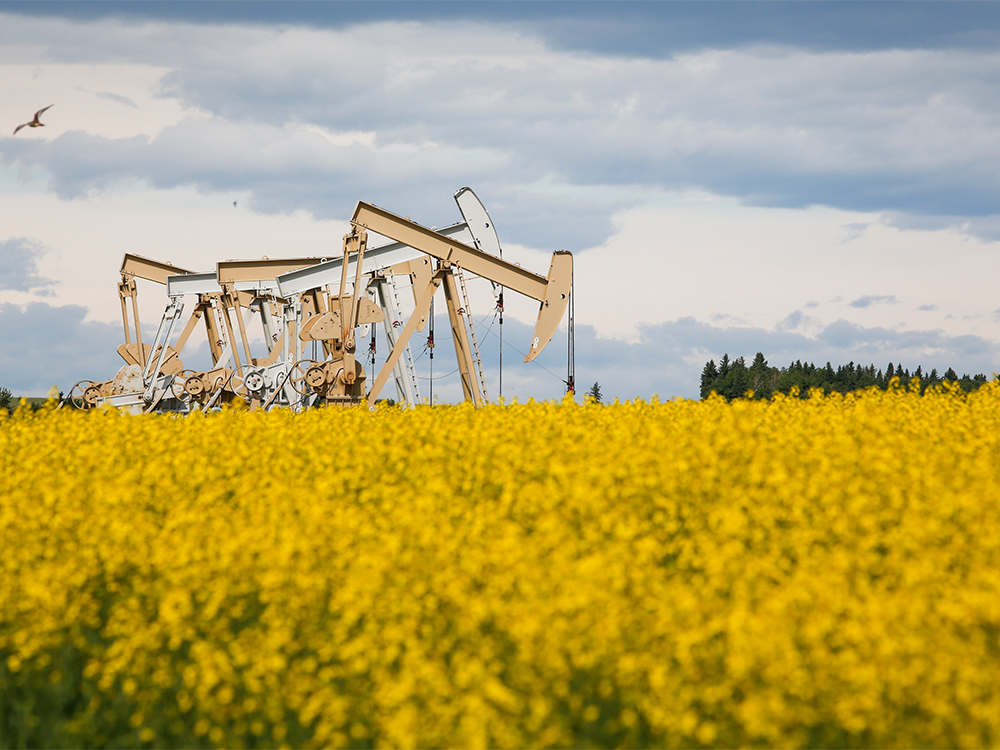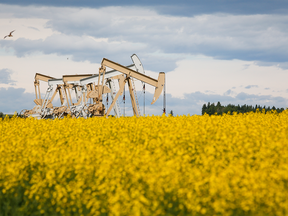Posthaste: Canadian crude oil poised for a record year on global stage, TD report says

Expected jump in output of up to 500,000 barrels a day could vault sector past United States

Article content

Despite the discord between Ottawa and the fossil fuel sector, Canada’s oil industry appears poised to set a global record for production increases this year that could “aid in a soft landing” for the economy, an analysis by Toronto-Dominion Bank suggests.
Article content
“The year ahead is shaping up to be a promising one for Canada’s energy sector,” Marc Ercolao, an economist at TD, said in a report on March 7. “Canada has the potential to be the largest source of crude supply growth to the global market.
Advertisement 2
Story continues below
Article content
He estimates that an expected jump in output of 300,000 to 500,000 barrels per day (bpd) could vault the sector ahead of the United States.
“In this sense, Canadian oil will continue to gobble up global market share” — about six per cent of world production, Ercolao said.
As a result, the economist said the oil industry “will carry positive impacts for Canadian real (gross domestic product), aiding a 2024 soft-landing scenario.” He estimates the oil and gas sector, which accounts for four per cent of real GDP, could end up boosting Canada’s growth this year by 0.2 to 0.4 percentage points.
“This is potentially impactful as Canada enters a cyclical slowdown, where we expect growth to register under one per cent,” he said.
Canada currently produces 4.9 million barrels of oil per day, placing it fourth behind Saudi Arabia, the U.S. and Russia for output.
However, Ercolao estimates Canadian production this year could soar to a range of 5.2 million bpd to 5.4 million bpd — “a record high” for the sector — if the increase in output reaches the high end of his range. Even at the low end, the rise in production could outpace that of the U.S., which is forecast to add a “more modest” 170,000 bpd.
Article content
Advertisement 3
Story continues below
Article content
Three of the world’s major energy forecasters are calling for most of the increase in supply to come from non-members of the Organization of Petroleum Exporting Countries this year, mainly Canada, the U.S., Brazil and Guyana.
Based on TD’s estimates, Ercolao said Canada could capture between 25 per cent and 67 per cent of global supply growth, more than the other three major contributors, with each projected to add 200,000 bpd.
The expected production surge is well-timed. It could help the oil sector capitalize on the “record quantities” of Canadian crude the U.S. is currently importing, allowing Canada to secure a larger share of the American import market than the 60 per cent it already holds. Higher oil prices won’t hurt, either, he said.
“This boost in demand should provide a tailwind for the Canadian economy,” he said, with a large chunk of the growth … supported by the completion of the Trans Mountain Pipeline expansion.”
The federal government’s controversial pipeline, years behind schedule and much more expensive than initially predicted, is scheduled to be up and running in the second quarter. Alberta’s oilsands unleashed record amounts of production at the end of last year to take advantage of the expanded pipeline’s capacity to 890,000 bpd from 300,000 bpd.
Advertisement 4
Story continues below
Article content
Besides getting more Canadian crude to market, Ercolao forecasts, as do others, that the Trans Mountain’s capacity will help shrink the discount between the U.S. benchmark West Texas Intermediate and Western Canadian Select, possibly to $3 to $4 per barrel from the $18 to $20 that has been in place during the past several years.
That will also encourage production and “industry profitability.”
But the picture for Canadian oil production starts to sour looking ahead to 2025.
Ercolao said he expects the industry to run headlong into fresh pipeline capacity shortages that will push down the price of Canada’s benchmark crude and slow production to a two per cent increase, or 100,000 bpd — less than the historical average of 150,000 bpd.
The outlook is further “clouded by the proposed federal emissions cap” and other policies including the Clean Fuel Regulations, he said.
But he said some of these challenges could be mitigated if the sector in Alberta is able to push ahead with a massive carbon-capture project being proposed by Pathways Alliance, a group of major oilsands players.
Advertisement 5
Story continues below
Article content
Sign up here to get Posthaste delivered straight to your inbox.

Canada posted a merchandise trade surplus of $496 million in January as imports fell to their lowest level since February 2022.
Statistics Canada said Thursday the surplus came after a revised trade deficit of $863 million in December compared with an initial report of a $312-million deficit for the final month of 2023.
However, BMO economist Shelly Kaushik noted the details of the report were weak as both exports and imports declined.
“The figures are in line with expectations for economic growth to remain soft to start the year,” Kaushik wrote in a note to clients.
Statistics Canada said total imports dropped 3.8 per cent in January to $61.8 billion.
The move came as imports of consumer goods fell 7.1 per cent due in large part to a 19 per cent plunge in imports of pharmaceutical products. Excluding pharmaceutical products, imports of consumer goods were down 3.8 per cent in January.
Meanwhile, total exports fell 1.7 per cent to $62.3 billion as exports of metal and non-metallic mineral products lost 6.2 per cent. Exports of aircraft and other transportation equipment and parts also dropped 13.9 per cent in January.
Advertisement 6
Story continues below
Article content
In volume terms, total imports fell 4.1 per cent in January, while exports dropped 1.8 per cent.— The Canadian Press
- Statistics Canada releases employment numbers for February. Economists will be watching the data closely looking for signs of cracks in the so-far resilient jobs market.
- Innovation Minister Francois-Philippe Champagne will participate in an armchair discussion at the Calgary Chamber of Commerce about Canada’s place in the continental and global economy.
- Today’s data: U.S. February job numbers
- Earnings: Hut 8 Corp., AltaGas Ltd., Taseko Mines Ltd.

Recommended from Editorial
Over 2.5 million Canadians have already filed their taxes for 2023. For those of you still working on your returns, fear not. Tax expert Jamie Golombek plans to periodically share helpful tips, some of which come directly from readers and clients, to guide you through the filing season leading up to the April 30 general deadline. Read Golombek’s five tips here.
Advertisement 7
Story continues below
Article content
Are you worried about having enough for retirement? Do you need to adjust your portfolio? Are you wondering how to make ends meet? Drop us a line at [email protected] with your contact info and the general gist of your problem and we’ll try to find some experts to help you out while writing a Family Finance story about it (we’ll keep your name out of it, of course). If you have a simpler question, the crack team at FP Answers led by Julie Cazzin or one of our columnists can give it a shot.
McLister on mortgages
Want to learn more about mortgages? Mortgage strategist Robert McLister’s Financial Post column can help navigate the complex sector, from the latest trends to financing opportunities you won’t want to miss. Read them here
Today’s Posthaste was written by Gigi Suhanic, with additional reporting from Financial Post staff, The Canadian Press and Bloomberg.
Have a story idea, pitch, embargoed report, or a suggestion for this newsletter? Email us at [email protected].
Bookmark our website and support our journalism: Don’t miss the business news you need to know — add financialpost.com to your bookmarks and sign up for our newsletters here.
Article content












Comments